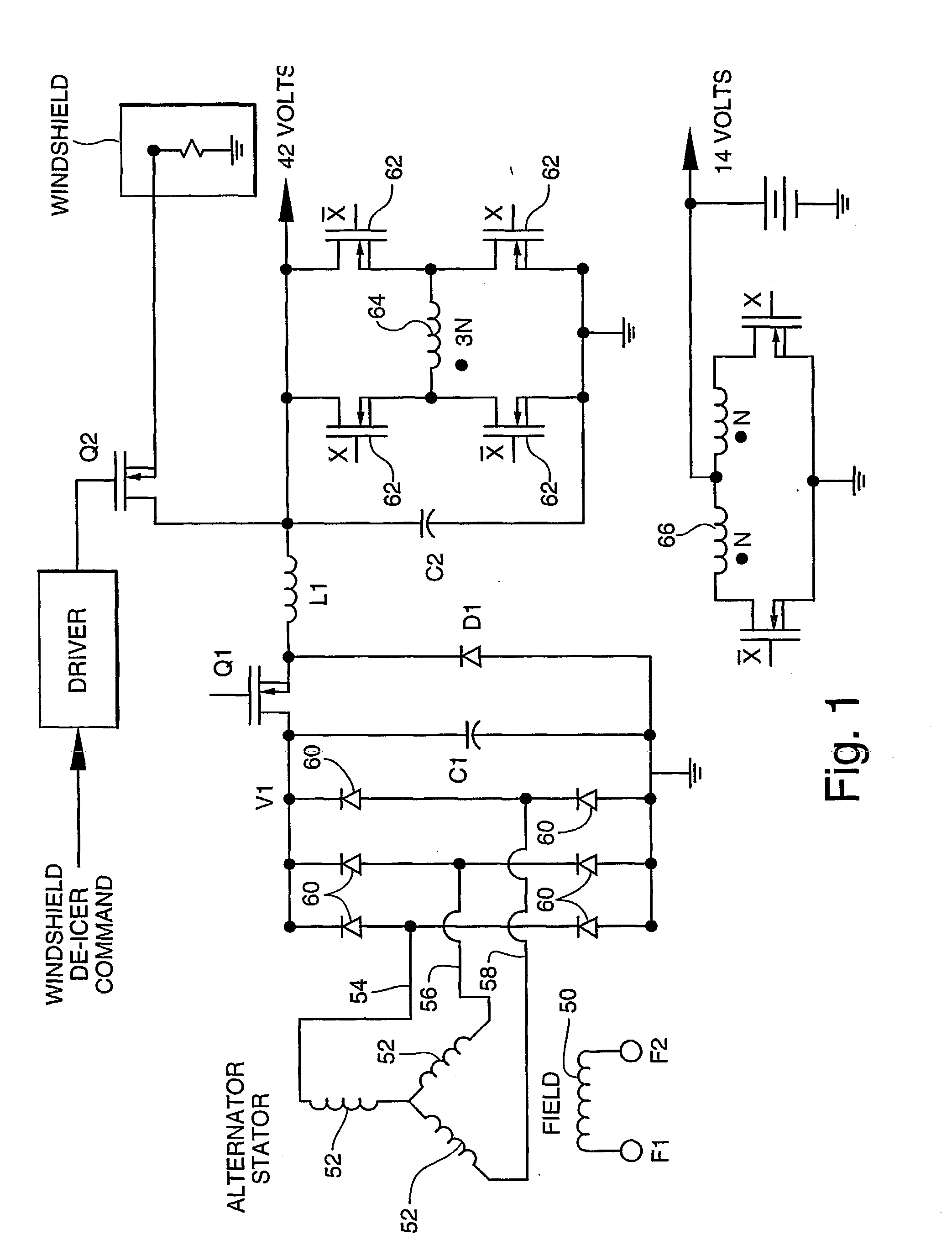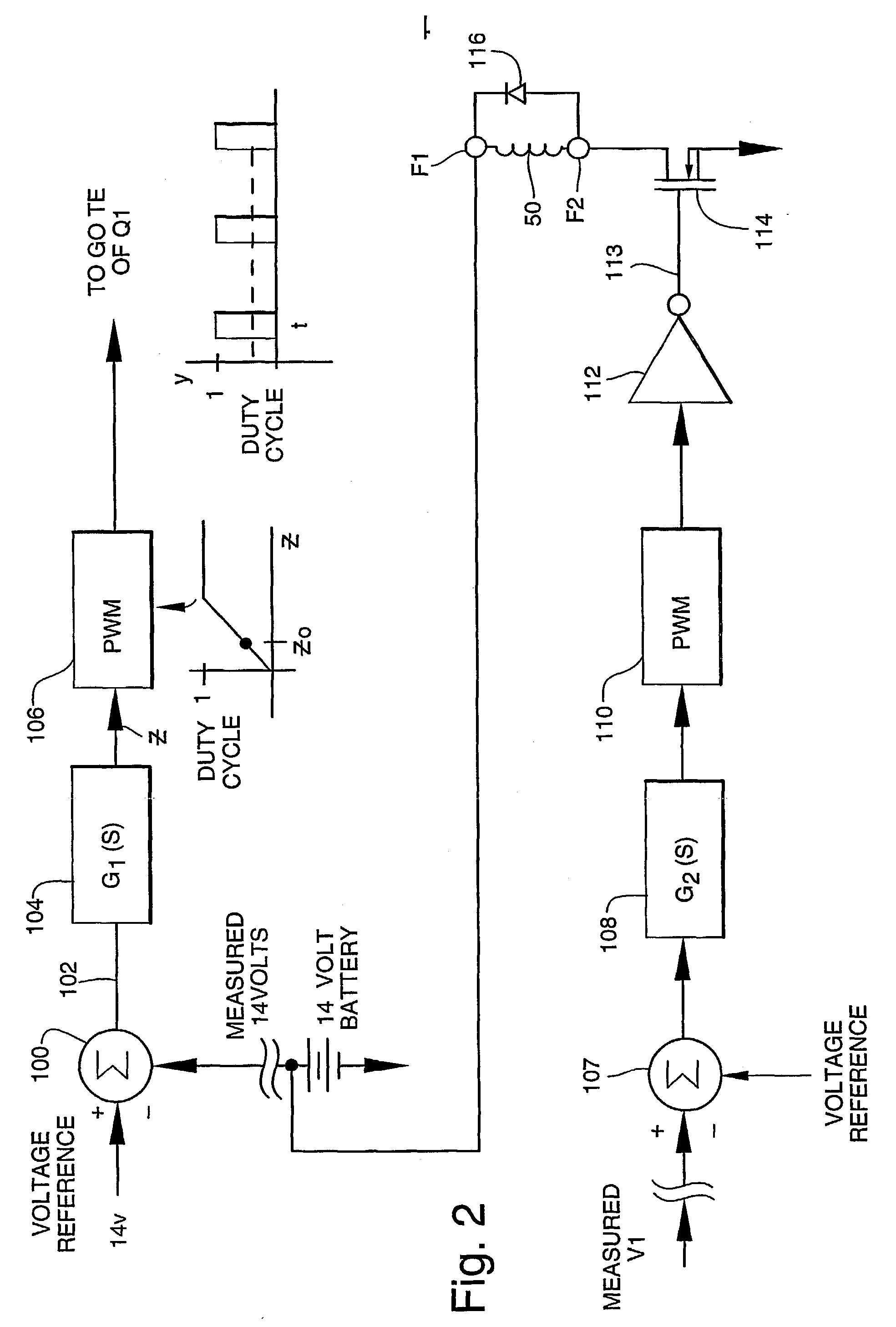Alternator system
a technology of alternators and belts, applied in the direction of electric generator control, process and machine control, instruments, etc., can solve the problems of system inability to provide the high power required, and the function of vehicle windshields requires a significant amount of power
- Summary
- Abstract
- Description
- Claims
- Application Information
AI Technical Summary
Benefits of technology
Problems solved by technology
Method used
Image
Examples
Embodiment Construction
[0033] In describing the preferred embodiments of the present invention, reference will be made herein to FIGS. 1-11 of the drawings in which like numerals refer to like features of the invention.
Series Switch Voltage Step-Down Configuration
[0034] Referring to FIG. 1, there is shown one embodiment of the alternator system of the present invention. This particular embodiment of the alternator system of the present invention generally comprises an alternator having a rotor (not shown) with rotor field winding 50 and stator windings 52. Current is inputted into field winding 50 via inputs F1 and F2. The output of each of the stator windings 52 is outputted through output leads 54, 56 and 58. As the rotor (not shown) of the alternator rotates, a voltage is induced in the stator windings 52. This voltage is fed through output leads 54, 56 and 58 and is connected to a full wave voltage rectifier formed by six power diodes 60. Such a fill wave voltage rectifier configuration is well known ...
PUM
 Login to View More
Login to View More Abstract
Description
Claims
Application Information
 Login to View More
Login to View More - R&D
- Intellectual Property
- Life Sciences
- Materials
- Tech Scout
- Unparalleled Data Quality
- Higher Quality Content
- 60% Fewer Hallucinations
Browse by: Latest US Patents, China's latest patents, Technical Efficacy Thesaurus, Application Domain, Technology Topic, Popular Technical Reports.
© 2025 PatSnap. All rights reserved.Legal|Privacy policy|Modern Slavery Act Transparency Statement|Sitemap|About US| Contact US: help@patsnap.com



